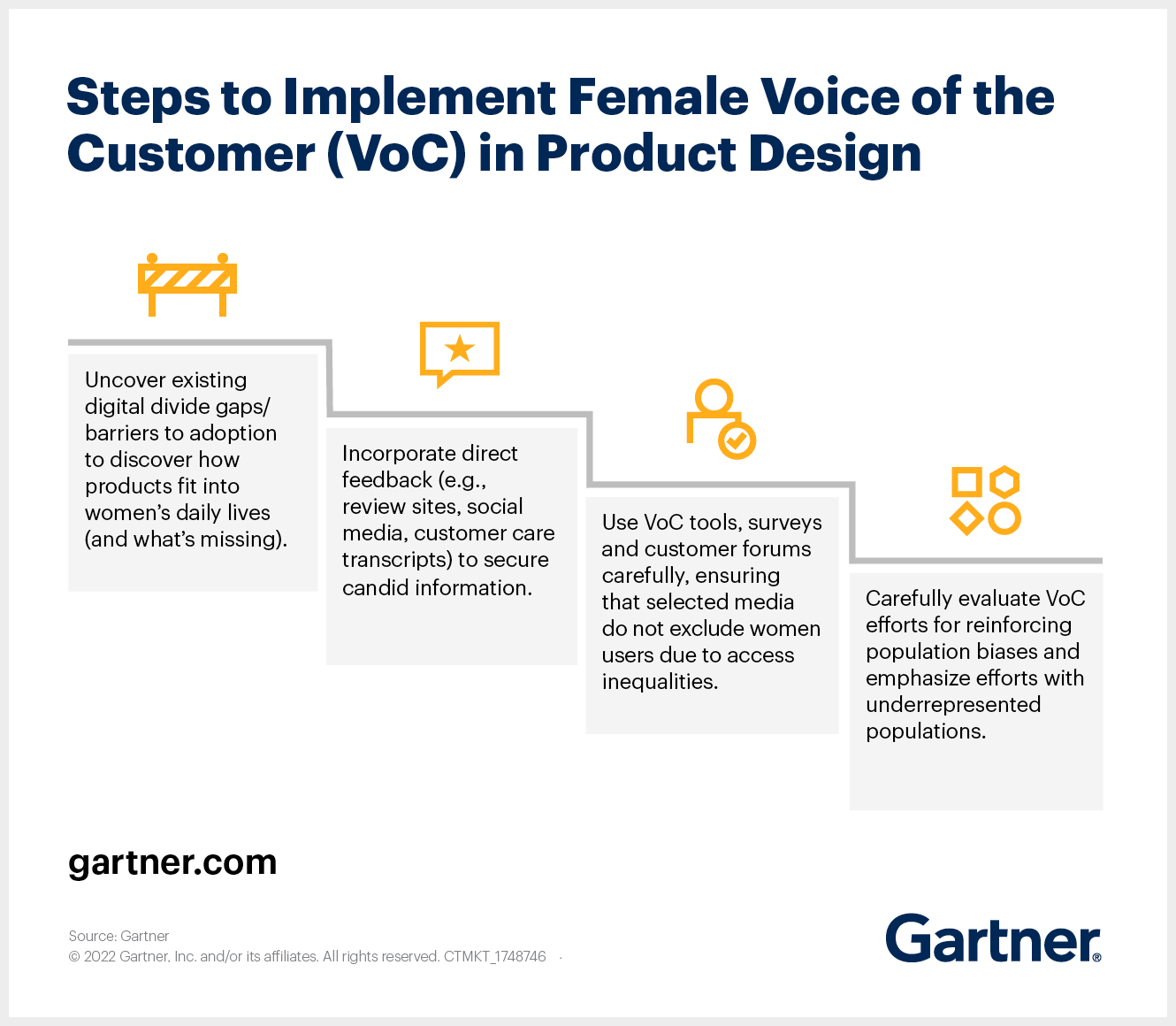Women account for approximately half of any user population, uneven access to technology by users — also known as the digital divide — disproportionally affects them. According to The World Bank, for example, over 300 million fewer women than men access the internet in low- and middle-income countries.
Unfortunately, many technology solutions exacerbate this issue with their gender-biased designs. Barriers facing women in consumer technology adoption include geographical and cultural limitations — for instance, using facial recognition in regions where women are required to wear face coverings in public — or unequal access to broadband and mobile phones, such as in South Asia where women are less likely to own a mobile phone than men.
“Technology, in short, has the potential to exacerbate inequalities as much as it has the potential to equalize them,” says Roberta Cozza, Senior Director Analyst at Gartner. “Product managers risk losing market share and customer relevance if they ignore equity and inclusion dynamics, overlook users’ diverse needs or fail to address factors contributing to digital divides.”
It's imperative to acknowledge and address these inequalities within solution designs to overcome the digital divide that’s preventing women users from adopting technology.
Identify barriers to tech adoption for women using voice of the customer (VoC)
To kick off efforts to remove gaps in technology adoption for women, use VoC to identify the various barriers affecting them across cultures, geographies, socioeconomic groups and other important demographics. Product managers can use VoC insights to eliminate these barriers to entry and improve the product experience for women users.
Ensure the VoC process itself is representative to help overcome gender barriers, rather than reinforce them. Assess multiple bias-proofed customer and user experience metrics around effort, usability and engagement to identify opportunities to address and relate to women users.
From here, implement the female VoC in product design by following the steps shown in the figure below. As the needs of women buyers are revealed, product managers will have a clearer idea of the product gaps and can determine how to start tackling the largest barriers or problem areas.
Use a mix of human-centric design practices to create inclusive experiences
Tech product managers must make it a point to focus on the design approaches that look at “human” factors in addition to “user” factors.
The term “user” focuses the product design approach on the individual as a utilizer or operator of a technology or solution. This alone is not enough to uncover and ultimately understand “human” factors, such as motivations, values, behaviours and specific goals for women as users and nonusers of technology.
Apply a combination of design approaches to do this successfully:
- Design thinking aims to understand the unique motivation, problems, concerns, and expectations of the target audience.
- Inclusive design processes help product managers understand the key aspects and challenges of gender-based designs through uncovering new or further points of inclusions/exclusions, overcoming bias in data and recognizing greater complexities related to design for gender.
As gender discourse continues to evolve, recognize greater complexities related to design and avoid further points of gender exclusion. For example, for nonbinary individuals, “woman” or “female” can be limiting labels. This means design teams must continuously understand the impacts and opportunities for broader gender-neutral segments up front.
Product design efforts can close the digital divide that women experience as technology users. One of the simplest solutions you can immediately implement is working to improve gender representation on your teams and ensuring inclusivity from the start.
Source : Article originally published on Smarter With Gartner.
Subscribe to our Newsletters

Stay up to date with our latest news
more news

Dell dévoile un nouveau moniteur tactile 10 points de 24 pouces pour une expérience utilisateur simplifiée et interactive
by DELL Technologies I 9:40 am, 21st August
Dell dévoile le premier moniteur tactile Hub USB-C (P2424HT) de 23,8 pouces avec connectivité Ethernet1 sur le marché. Cet écran offre une expérience utilisateur simplifiée et interactive avec une connexion réseau optimisée, pour plus de productivité et ce quel que soit l’environnement de travail.
load more

 BACK to News
BACK to News 



